We are a participant in the Amazon Services LLC Associates Program, an affiliate advertising program designed to provide a means for sites to earn fees by linking to Amazon.com.

Mylee is a certified child sleep consultant and child behavior consultant who has helped families worldwide. Originally a social worker from Australia, she has since relocated to New York, where she now does speaking engagements, group seminars, virtual consultations, and in-home consultations. She was named one of the Top Sleep Consultants in the U.S. by Tuck Sleep.
You can read the first part of this interview HERE.
I hear more and more from moms who are bedsharing. Didn’t the AAP recently create safe bed-sharing guidelines?
The general guidelines are not to bed-share, and, because of the risks, I can’t recommend it.
The AAP believes that sharing a bed is a huge risk, and they advise against it. However, with a large number of parents still choosing to bed share, the AAP revised guidelines in 2016. Though not advocating for bed-sharing, they recognize that it does happen, and they provide information for the safest options possible:
“The safest place for an infant to sleep is on a separate sleep surface designed for infants close to the parents’ bed. However, the AAP acknowledges that parents frequently fall asleep while feeding the infant. Evidence suggests that it is less hazardous to fall asleep with the infant in the adult bed than on a sofa or armchair, should the parent fall asleep. It is important to note that a large percentage of infants who die of SIDS are found with their head covered by bedding. Therefore, no pillows, sheets, blankets, or any other items that could obstruct infant breathing or cause overheating should be in the bed. Parents should also follow safe sleep recommendations outlined elsewhere in this statement. Because there is evidence that the risk of bed-sharing is higher with longer duration, if the parent falls asleep while feeding the infant in bed, the infant should be placed back on a separate sleep surface as soon as the parent awakens.” – AAP Publications.
These products that incorrectly advertise themselves as safe for sleep – do they have a useful purpose?
I have no idea.
The Rock ‘n Play was designed because a company employee had a child with acid reflux. This employee’s pediatrician recommended having the baby at an incline, which we now know is worse for acid reflux, and they decided to create a product with an incline.
It became a huge sensation. New parents loved using it for babies with reflux, and the babies enjoyed how soft and cuddly it was.
But I can’t see any purpose for the Rock ‘n Play when it comes to sleep because it’s so unsafe. I guess I could see it as a place for parents to put babies, when they are awake and watching, to get something done.
The main problem with the Rock ‘n Play and similar products is that babies can turn their heads and get in unsafe positions.
Babies don’t even have to smoosh their faces into the side for the product to be unsafe. When babies get their faces too close to the side, they can start rebreathing the same air they’ve expelled, and breathing in carbon dioxide is unsafe. Also, when babies are at an incline, their chins can fall to their chest, cutting off airways. Babies also slide down the incline into unsafe positions and get caught in the straps.
I’m not sure what the Dock-A-Tot was originally designed for, but aside from babies just laying in it and playing, there isn’t any use for it. And the Dock-A-Tot scares me – it’s so padded, and there’s not a lot of room to safely move and change positions. I’ve had clients who were using it when their babies were six months old, and at that point, babies can roll! Babies could easily flip into the wrong position.
Ultimately, the safest way to use these products is when babies are being carefully watched. But at the same time, that doesn’t make it fool-proof. Even sitting next to a baby sleeping in a Rock ‘n Play doesn’t guarantee the ability to tell when the baby could be in danger of breathing in carbon dioxide.
What are your recommendations for babies with acid reflux or GER*?
There’s no reason why babies with acid reflux or GER need to be inclined. That’s a really common and incorrect recommendation.
My son had very bad silent reflux, but having him elevated or flat made no difference. What did make a difference was having him well medicated, and also having a good burp after feedings.
The current recommendation from well-respected gastroenterologists is that babies should be held up for about 30 minutes after eating. Once they’ve had a good burp, babies should be fine to lay down flat on their back.
When babies have really bad reflux, we can medicate them. And if they’re well medicated, they should be able to sleep on a flat surface.
When it comes to the vomiting, also, they do not need an elevated surface. Because of the way airways work, it’s safest for babies to be lying flat on their backs.
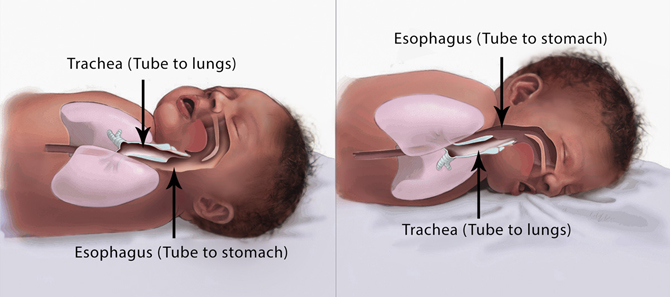
*GER, GERD, and acid reflux are often used interchangeably, though they mean separate things. GER in infants is not considered a disease, thus the D is left off. More information on that can be found here.
What’s the best way to handle newborn naps? Is it okay for them to sleep somewhere other than their crib?
As much as possible, we should be practicing putting babies down in safe places to sleep. I’m not expecting a new mom to do that every single nap time, but practicing is important, especially when babies are younger, as this is all very new to them.
When they’re brand new, newborns generally eat, have a diaper change, and then sleep. So after they’ve had a diaper change, they can just be put down in their cribs. But as they get older, some babies struggle more with settling and falling asleep. At this point, I suggest parents try to put their babies down drowsy but awake. This helps them learn to fall asleep independently. Then if babies still struggle, there are other things we can try, like rocking or patting them. But the goal is to get them into their crib or bassinet to sleep.
As babies get older, it’s important to be even more cautious not to create bad habits. Parents can’t be running into the nursery to rescue babies every time they cry. The more parents practice good sleep habits and putting babies down drowsy, the easier it will be for them to learn to fall asleep.
Then when any sleep problems do come up, like regressions, they’ll already have learned the sleep skills they need.
What can you do in the beginning to help facilitate healthy sleep habits? Should you be using sleep sacks or swaddling? Should naptimes always be in a dark room?
Newborns have day and night confusion, and it’s not so much about them not knowing the difference between day and night, but just about needing to sleep frequently. They’re not going to sleep 5, 6, or 7 hours overnight when they’re newborns.
They have to learn how to sleep. One way we can help them is by having them in noisy environments during the day, and then putting them down in the dark at night. This way they’re seeing the difference between day and night.
During the day, they can even be napping in the crib or bassinet out in the living room.
And we should definitely have blackout shades in the bedroom. White noise is great because it reminds them of being in the womb. Swaddling can help babies sleep better and longer, but as soon as they show signs of growing and rolling, they should be transitioned out of swaddles.
Unfortunately for some babies, this transition happens before they lose their startle reflex.
Dr. Moon of the AAP recommends ending swaddling around 2 months old unless babies show signs of rolling even earlier. It’s important to swaddle safely, using thinner blankets and very few layers to avoid overheating, and hips should always be swaddled loosely to encourage healthy hip development.
Earlier we talked about not having anything that babies could squish their faces into, like the side of the Pack ‘n Play. What about bumpers? Are mesh bumpers safe?
Bumpers aren’t safe, period. Not even the mesh ones that claim to be breathable should be used in cribs.
While the AAP doesn’t differentiate between types of bumpers, they recommend avoiding all bumpers due to the risk of strangulation, suffocation, and entrapment. Some states and major cities have even taken to banning these products.
Bumpers were originally invented because people were trying to prevent babies from getting their heads stuck between the crib slats. But cribs are now made with smaller spaces between the slats, so there’s absolutely no need for bumpers.
Yes, kids will get their arms or feet through the slats and it might startle them, but it’s rarely dangerous. If they can get their arm through the slats, they should be able to get it back out.
When purchasing a crib, always go online to the CPSC to check the safety standards. If gifted a crib, definitely check the updated recommendations to make sure it’s still safe and hasn’t been recalled.
I wouldn’t recommend using a second-hand crib. Just like car seats, even if it appears to meet safety standards, it’s hard to tell if there’s internal damage or if the product has lost any of its integrity through use.
Is it safe to let babies sleep in strollers or baby carriers?
As much as possible, I recommend not having babies sleep in these products. It’s just too difficult to ensure that babies are in safe positions.
If babies are going to be napping in the stroller, I’d recommend having them lay flat, not at an incline. Babies should always be on a flat, firm surface, and they shouldn’t be left in strollers or car seats for too long.
Regarding baby carriers, again, it can be hard to tell if babies are positioned correctly. If babies will be sleeping in their carrier, parents should ensure that they’re well-versed in using the carrier correctly.

I see so many people carrying their babies too low, down at the parent’s chest or cleavage. Parents should be able to just tilt their faces down and kiss the top of their baby’s head. Babies need to be up that high to ensure there’s enough space for their mouths and noses to breathe freely.
While it’s ideal for babies to always nap in cribs or bassinets, parents all have to go out sometimes, so just make sure to be as safe as possible.
And if babies are out during nap times, there are additional issues to consider, such as overheating.
Often I see moms carrying babies in their car seat with a thin blanket draped over the top. Is that safe?
I see this a lot during the summer.
Putting anything over a car seat, stroller, or carrier reduces the air circulation, causing the heat to rise quickly. It doesn’t even need to be a hot day for this to be dangerous, and overheating is a major risk for SIDS. Babies should never be covered, and it’s important to keep an eye out for signs of dehydration and heat exhaustion.
Mistakes happen all the time, especially with information constantly changing and new recommendations coming out.
It can be hard for new moms to navigate safe sleep, but as long as parents are aware of the rules and recommendations, they can make smart choices for their family.
In the final part of this interveiw, we discuss dropping naps, healthcare services, and the 5 S’s. If you need immediate assistance with child sleep or behavioral issues, visit Little Big Dreamers.
Posts You Might Like:

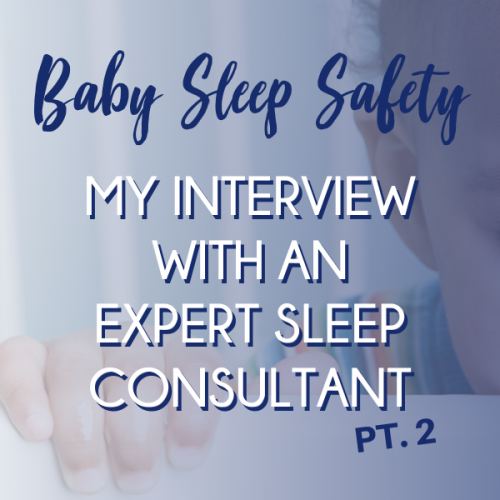
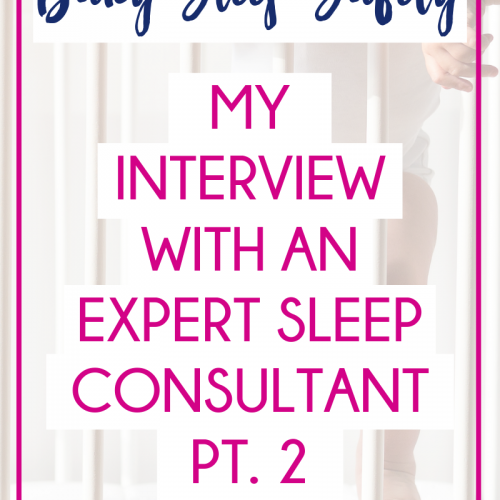





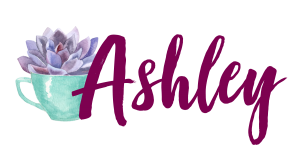
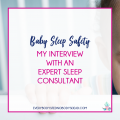
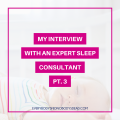
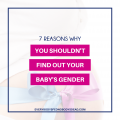
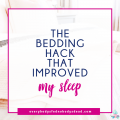
Leave a Reply
You must be logged in to post a comment.